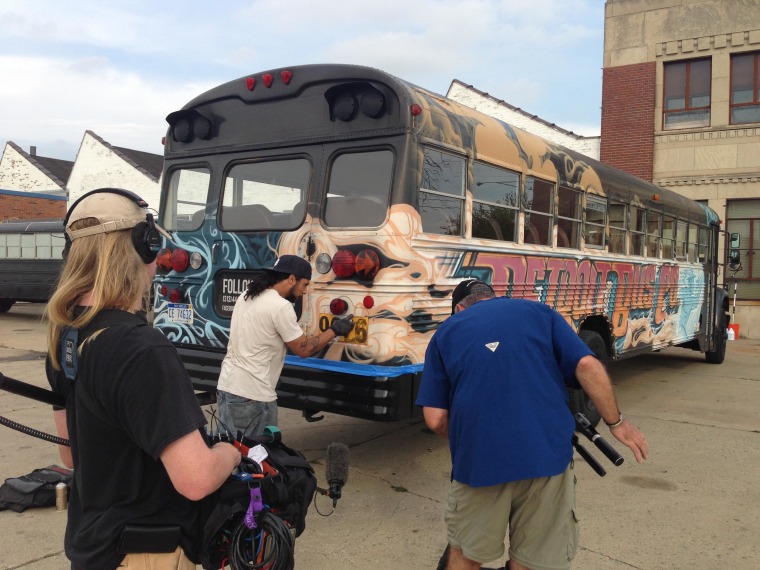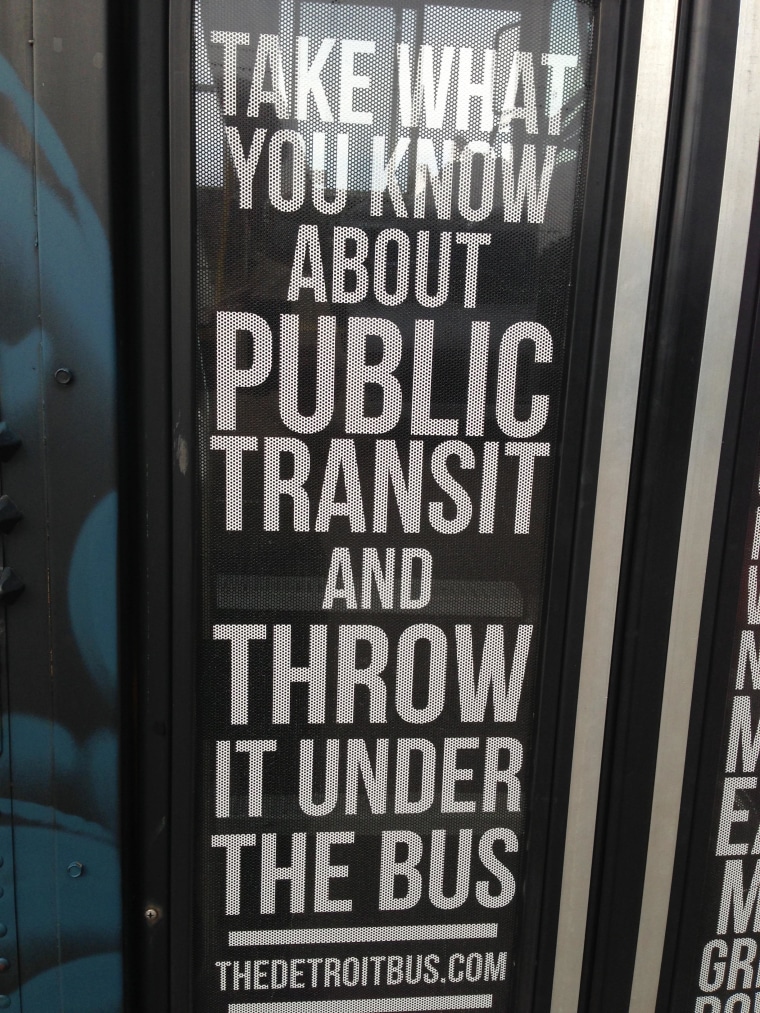These are dark times for Detroit. Literally. Forty percent of its streetlights are broken. Seventy-eight thousand buildings have been burned or abandoned, and nearly that many bus riders in this bankrupt city are left to wonder when — or if — they'll get to work.
Vera Flemings plays that guessing game every day. Two buses had just passed her by when I wandered up; she was waiting for a third. It pulled up 15 minutes later.
The doors opened. It was packed. No one got off. "Oh my God!" she cried. "I can't get on!"
By the time the fourth bus rolled to a stop, the nurse's aide had been waiting a total of 40 minutes. She was ready for a new idea. "I can't believe it," she sighed.
An empty seat.
Sixty years ago, Detroit was the envy of the world, one of its richest cities, built on automobiles and broad shoulders. Today it's bankrupt.
But bankruptcy doesn’t mean a lack of good ideas. They are still there, in the shadows.
One sprang from Andy Didorosi: He discovered a way to make bus rides a little less stressful. The 26-year-old didn't know much about mass transit when he started his own Detroit Bus Company in May 2012, but he knew what it should do. He bought six old buses, hired a graffiti artist to spiff them up, and installed electronic trackers.

Didorosi clicked on a computer map to show me how they work. "See that little dot moving down the road? That's the bus. You can see where it is in real time. Our electronic trackers let us send buses right where they are needed, instead of just running up and down the street and hoping that there are people there to ride [them]." Commuters will soon be able to tap their location into the company web page or watch their bus approach on a smartphone app.
Of course, the little Detroit Bus Company can't compete with the city's big transit system. So Didorosi is trying something the city needs even more. There are 40 after-school programs in just two southwest Detroit neighborhoods, but children couldn’t get to them safely. Fifteen percent of the homes on their streets are rubble and ash.
Kim McPhail sat on her front porch and looked at the gaping holes on down the block. "Everything's gone, just about," she said.
Every family was gone too, except the McPhails: All five of Kim's grown children still have jobs in a city with an unemployment rate of 18.5 percent. So they can't always pick up the littlest McPhail when she goes to the Delray Neighborhood House after school. Ten-year-old Kiara sometimes had to walk home, crouching in her mind.

"It was really scary," Kiara said. "There was a lot of dangerous stuff inside of alleys we had to go through."
Now she is never alone. Didorosi’s buses constantly move around her neighborhood with an adult conductor who looks after her. The new tracking technology makes that possible; it keeps buses moving efficiently. Two can do the work of 20. They each carry 1,100 children to a better place every month.
"If these kids attend these (after-school) programs, they're more likely to graduate," Didorosi explained. "They're more likely to go to college. And they're more likely to bring that success back to their neighborhood." Something few thought possible — at first.
"There have been many times that this bus company has terrified me," Didorosi admitted. But with common sense and a dash of wit, it is thriving.
For example: Didorosi was told that insurance for his buses would cost more than all the after-school programs combined. He asked: “What’s the rate for party buses?”
A lot less, it turned out. So that's what he called them. "And they said, 'Oh, no problem then,'" he laughed. "We had our service."
There are deep shadows in this city, but Kiara McPhail no longer journeys a troubled road, dreading the darkness, because a good idea lights her way.
Do you know someone outstanding? Email Bob Dotson.